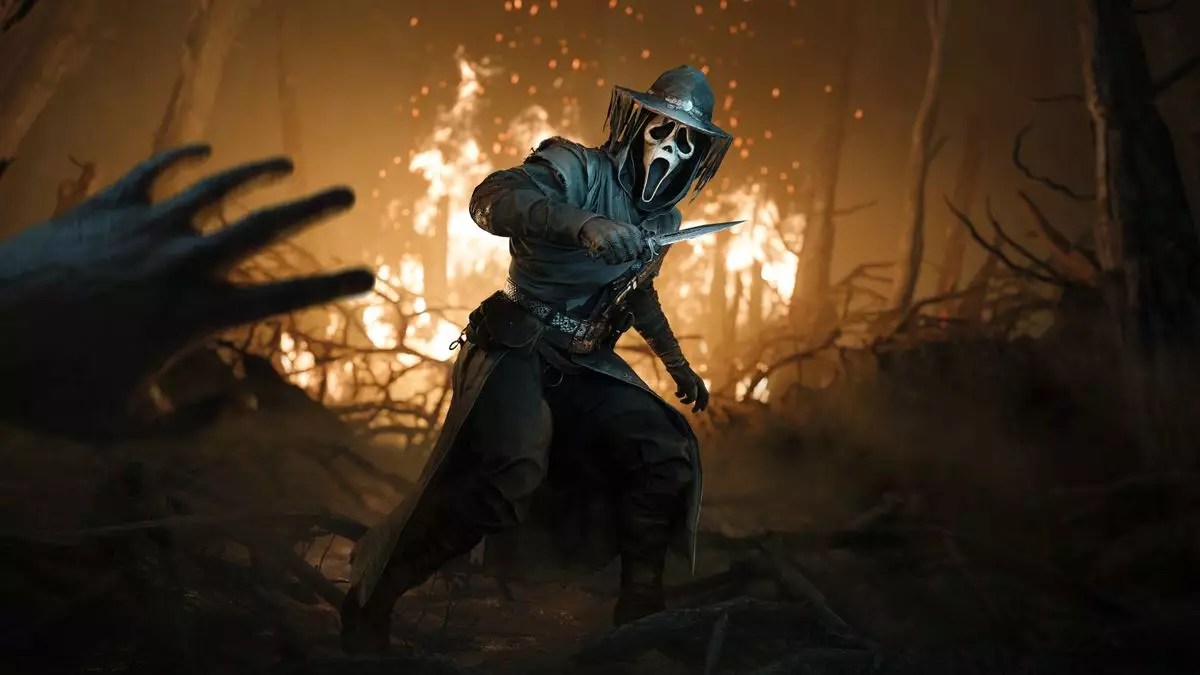Crytek’s recent decision to incorporate the Ghostface character from the iconic slasher film Scream into their multiplayer first-person shooter Hunt: Showdown has stirred a rather significant debate among its community. Set in an alternative 1890s Colorado, Hunt: Showdown presents a unique blend of supernatural horror and competitive gameplay. However, the introduction of such a starkly different cultural element, like Ghostface, has raised eyebrows and questions about the direction of the game. Fans of horror cinema are delighted, while purists of the game’s lore find this crossover puzzling, showing the wide spectrum of reactions that such integrations can provoke.
The concept of integrating characters from established franchises into video games is not uncommon; however, Crytek’s methodology of blending these worlds raises questions about coherence and immersion. The potential clash between Ghostface’s contemporary slasher origins in 1996’s Scream and the 19th-century setting of Hunt: Showdown seems jarring at first glance. The questions loom large—does the inclusion of a modern horror icon detract from the game’s established narrative, or does it add a fresh layer of excitement?
The player community’s reaction has been remarkably varied. Some appreciate the playful nature of such a crossover, arguing that it brings a layer of accessibility and fun to Hunt: Showdown, potentially attracting fans from the horror genre who may not otherwise engage with the game. On the flip side, many players express concern over how these collaborations might compromise the immersive storytelling that Crytek has worked hard to establish.
In the wake of criticism, Crytek’s response blurred the lines between justification and deflection. While they acknowledged the pushback, their insistence on remaining true to the spirit of both franchises felt like a thin veil over what many perceived as a marketing gimmick. Their statement emphasized that the collaboration was intended to weave new threads into the game’s rich tapestry of horror and to enhance the narrative experience. However, the community is left to discern whether this ambition truly aligns with the original ethos of its rich, historical setting.
Crytek articulated their vision for the Ghostface Rampage DLC by framing Ghostface as an “ageless” figure that resonates beyond the timelines of either franchise. This assertion feels like an attempt to justify the incongruity through an elaborate backstory. They suggest that Ghostface is not merely a slasher figure but embodies a fear that transcends time periods. Nevertheless, does this narrative depth compensate for immersion-breaking elements, or does it highlight the inherent absurdity of the crossover?
At the core of these discussions is a broader question regarding the balance between narrative coherence and fan service. Modern gaming often finds itself walking a tightrope of nostalgia and innovation. While many players revel in the chance to engage with beloved characters in different contexts, others call for respect towards the established lore and narrative sensibilities. How can developers navigate this tension without alienating their core player base?
The Ghostface incident may set a precedent for future collaborations within the gaming industry. As video games continue to evolve into more complex storytelling mediums, the integration of outside intellectual properties will likely inspire both excitement and apprehension among fans. Developers face the challenge of creating crossovers that feel organic and enhance rather than detract from the original experience.
Ultimately, Crytek’s decision to introduce Ghostface into the Hunt: Showdown universe embodies the ongoing debates about how far creative liberties can be taken in the gaming industry. It questions the extent to which popular characters can be integrated without diminishing a game’s experience. As fans and developers navigate this new landscape, it is clear that bold choices will carry weight, sparking discussions that will influence the future of gaming narratives. Whether one sees the Ghostface skin as a fun addition or a mere gimmick, it undeniably illustrates the intricate dance between innovation and tradition in the ever-evolving world of gaming.


Leave a Reply